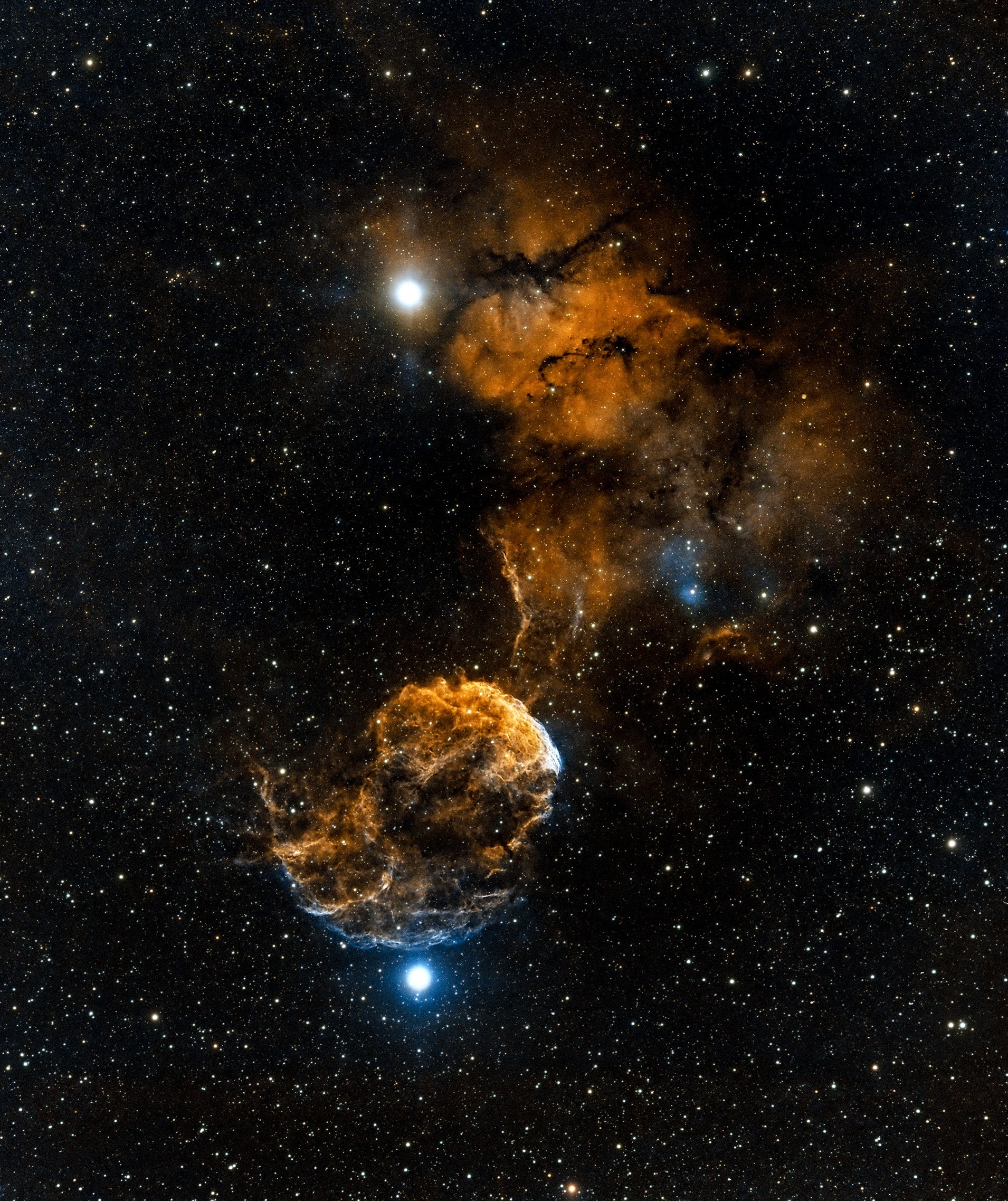
The supernova remnant cataloged as IC 443 and Sharpless 2–248 is more commonly known as the Jellyfish Nebula. It lies in the constellation Gemini the Twins. IC 443 isn’t small. It has a diameter of 50′, which means it covers 2.8 times as much area as the Full Moon. Because it is so large and diffuse, it’s a much better target for imagers than for visual observers.
Although astronomers know that this object was once a massive star that exploded as a supernova, it’s been tough to pin down when that happened. Estimates range between 3,000 and 30,000 years ago. It lies some 5,000 light-years from Earth, which would make its actual diameter approximately 70 light-years.
In 2015, data from the Chandra X-ray Observatory revealed what may be the remnant of the supernova that created IC 443: On the nebula’s southern edge, it found a pulsar (a rotating neutron star) with the imposing designation J061705.3+222127.
However, researchers have also discovered that IC 443 is a weak X-ray source whose light is produced as electrons in the surrounding gas are released by heat generated from a central neutron star’s infrared emission. This differs from many supernova remnants whose X-ray emission comes from the wind generated by a pulsar, rather than its heat. But it’s difficult to see what’s really going on because a giant molecular cloud between us and IC 443 is absorbing lots of the X-rays and visible light the object is producing.
The structure of IC 443 has been heavily influenced by its surroundings. In the southeast part of the nebula, the supernova’s blast wave is interacting with a dense molecular cloud. The cloud has slowed down the wave so that it’s now moving between 67,000 and 89,000 mph (108,000 and 144,000 km/h).
Toward the northeast part of the nebula, however, the blast wave is hitting a cloud of hydrogen that is much less dense. There, it’s moving at between 180,000 and 220,000 mph (290,000 and 360,000 km/h).









